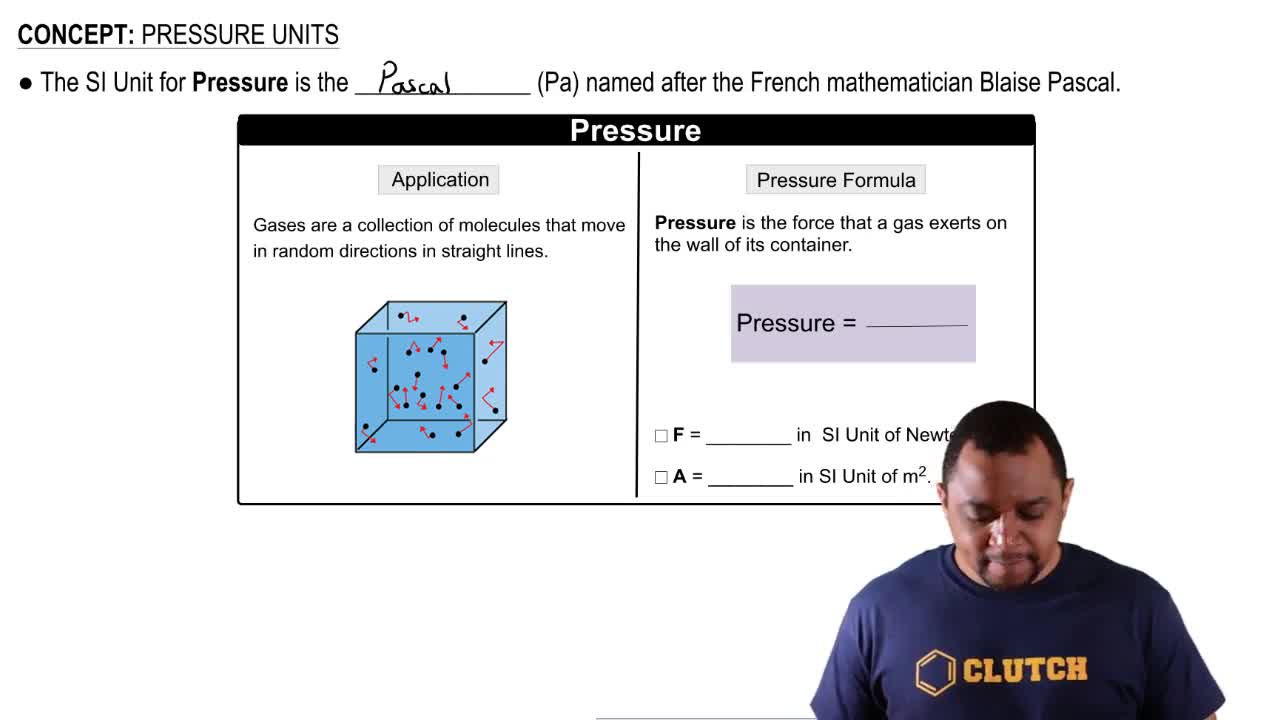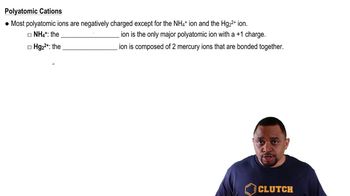(a) How high in meters must a column of ethanol be to exert a pressure equal to that of a 100-mm column of mercury? The density of ethanol is 0.79 g/mL, whereas that of mercury is 13.6 g/mL. Assume that the density of the water is 1.00 5 1.00 3 103 kg/m3. The gravitational constant is 9.81 m/s2, and 1 Pa 5 1 kg/ms2.

The highest barometric pressure ever recorded was 823.7 torr at Agata in Siberia, Russia on December 31, 1968. Convert this pressure to (b) mm Hg
 Verified step by step guidance
Verified step by step guidance
Verified video answer for a similar problem:
Key Concepts
Barometric Pressure

Unit Conversion

Torr and mm Hg

(b) What pressure, in atmospheres, is exerted on the body of a diver if she is 10 m below the surface of the water when the atmospheric pressure is 100 kPa? Assume that the density of the water is 1.00 5 1.00 3 103 kg/m3. The gravitational constant is 9.81 m/s2, and 1 Pa 5 1 kg/ms2
(a) The compound 1-iodododecane is a nonvolatile liquid with a density of 1.20 g>mL. The density of mercury is 13.6 g>mL. What do you predict for the height of a barometer column based on 1-iodododecane, when the atmospheric pressure is 749 torr?
The highest barometric pressure ever recorded was 823.7 torr at Agata in Siberia, Russia on December 31, 1968. Convert this pressure to (c) pascals.
The highest barometric pressure ever recorded was 823.7 torr at Agata in Siberia, Russia on December 31, 1968. Convert this pressure to (d) bars.
The highest barometric pressure ever recorded was 823.7 torr at Agata in Siberia, Russia on December 31, 1968. Convert this pressure to (e) psi.
